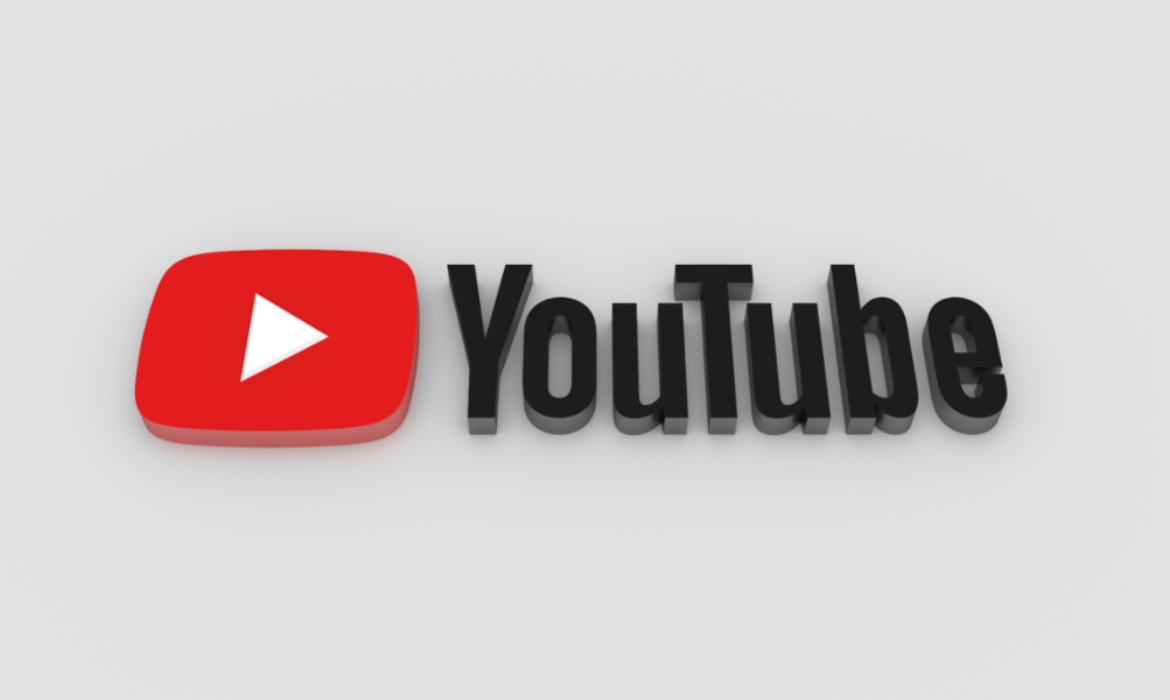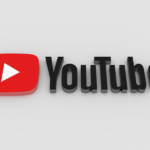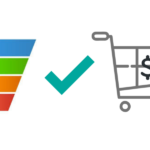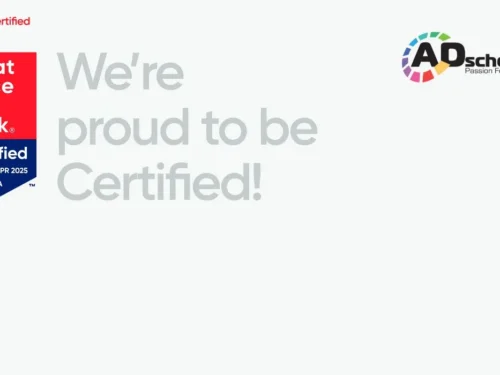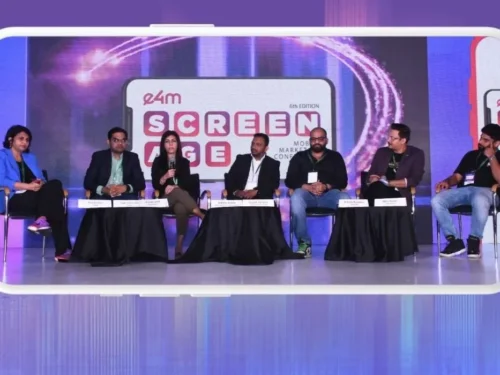Everything You NEED TO KNOW About Advertising On YouTube In 2020
One of the highly successful digital marketing strategies today includes video advertising. With YouTube becoming the most popular video-sharing platform and second-largest social media site, it is logical for any business big or small to use YouTube advertising. So, whether you are B2B or B2C enterprise, whether you are promoting a product or service, if you want to belong to the 85% of businesses which use video as a digital marketing tool, now is the time to understand, ‘Why YouTube ads’ and ‘How to Advertise on YouTube’ to build the most successful digital marketing strategy. Here, is an overview of everything you need to know about advertising on YouTube in 2020. We’ll take a look at the importance of YouTube, how to use YouTube Ads to grow your business, why are YouTube Ads successful, and how the platform works.
The growing importance of YouTube Ads
In January 2020, YouTube users accounted for 2 billion out of a total of 4.54 billion active internet users. Today most Digital Marketers use YouTube ads as part of their digital marketing plan since YouTube:
- Reaches the right audience
- Offers lots of volume at low cost
- Videos impact the audience faster than most other advertising mediums
- Has a quick and easy means to set up your video campaign
- Can measure the success of the campaign
- Is great for small business looking for attention to their product
Why is YouTube Ads becoming an essential part of every ad campaign in 2020?
Taking a look at the increasing numbers of digital video viewers and YouTube advertisements 2019, video ads are more than just a trend. With the most favorable statistics, YouTube advertising in 2020 is expected to grow and become an integral part of every social media marketing plan. YouTube ads help expand your reach, customize ads, target videos by topics or keywords, and offer a range of cost-effective advertising campaigns. Here are a few defining YouTube and online video statistics: –
- Around 2 billion users worldwide log-in every month on YouTube (May 2019)
- YouTube (85%) and Facebook (79%) are the most widely used platforms among video marketers
- More than 70% of YouTube viewers watch YouTube on mobile devices.
- Most viewers spend an average of 1 hour per day watching YouTube videos.
- 93% of digital video viewers in India (approx 271.9 million) are YouTube viewers (September 2019).
- Users upload 500 hours of video every minute on YouTube. It amounts to approximately 30,000 hours of newly uploaded content per hour.
- Worldwide mobile advertising spending was USD 190 billion (2019) and is expected to exceed 280 billion dollars in 2022.
- By 2021, 82% of all internet traffic will be online videos i.e. 15 times above that in 2017.
How to begin YouTube advertising?
YouTube offers a choice of five ad formats for businesses to build brands depending on the customers they wish to engage with:
- TrueView Ads
- Non-skippable video Ads
- Bumper Ads
- Outstream Ads
- YouTube Masthead Ads
1. TrueView Ads
True View ads are ads that are skippable after 5 seconds. They may consist of how-to videos, call-to-action, brand building, product demonstrations, etc. While these ads help to reach a larger target audience, they are also equally cost-effective since you only pay (cost per 1000/CPM basis) if the ad has played for 10 seconds (previously 30 seconds) or longer or prompted an action like a click from the viewer.
TrueView Ads are further sub-categorized as, In-Stream and Discovery.
-
In-Stream Ads:
An In-Stream Ad or a Skippable In-Stream Ad or a Pre-roll ad is a form of YouTube advertising where advertisements are shown before the YouTube video is played. In this format, the cost is incurred after 10 seconds since users have an option to skip the ad videos after five seconds. Introduced in April 2018, by Google the ads between 6-30 seconds aim to maximize reach. Therefore, it is extremely important that the YouTube ad is compelling, shows the logo/business name in the first five seconds. Towards the end, it can include a call-to-action. 72% of people watch In-Stream ads till the end. The main aim here is to send traffic to your website/landing page. While setting up the campaign for skippable ads, you can thereby select all of these goals – Sales, Leads, Website traffic, Brand awareness and reach, Product and brand consideration.
-
Video Discovery Ads:
You would choose to advertise on the display network if you wanted to help viewers discover your company and brand. These TrueView Ads show up on YouTube search results pages and as recommended videos section or as video overlays. Businesses are charged not on the basis of time but only when the Discovery Ad is clicked on. The campaign goal to select for this ad type should be – Product and brand consideration. This ad format, does not limit the video length. A Discovery Ad or Display Ad can also be an Image Ad (non-video ad).
2. Non-Skippable Video Ads
Non-skippable ads or non-skippable in-stream ads are maximum of 15 seconds (Few countries like India, Singapore, Malaysia and others allow 20 seconds). Since non-skippable ads are paid for on a cost-per-mille (CPM) basis, i.e. 1000 ad impressions on one web page, they are mostly used to create brand awareness among specific target markets. The best campaign goal to select to use this ad format is – Brand awareness and reach. There are two types of non-skippable ads on YouTube
- Pre-roll ads that appear before a video plays, and
- Mid-roll ads which appear in the middle of a 10 minute-or-longer video
3. Bumper Ads
Bumper ads on YouTube, are six-second video ads that viewers must watch before they can access the video. This type of ad should focus on a single objective. Even selecting the campaign goal to use this ad format should be only one – Brand awareness and reach. The advertiser pays to run the ad on CPM basis. It is mostly used for targeting mobile users. Some of the famous Bumper ads include Samsung GalaxyS8, Good Knight Activ+, Mercedes AMG GT S, Subaru Forester, Dove’s Project Show Us, Cheetos Win What You See. 9 out of 10 bumper ads drove ad recall globally, with a lift (increase in sales on account of advertising) of over 30%.
4. Outstream Ads
This is a mobile-only ads format used to expand the reach of your video ads on mobile. These play without a sound until the viewer unmutes the video. They are also charged basis viewable cost-per-thousand-impressions (vCPM). The campaign goal you need to select to use this ad format is – Brand awareness and reach.
5. YouTube Masthead Ads
This is the perfect fit when you want to reach out to a massive audience in the shortest period of time. The format is available for desktop, mobile and TV screens. It is used mostly used for sales events. Currently, this ad format is only available by reservation through a Google Sales Representative. They are charged on a fixed cost-per-day (CPD) or cost-per-thousand-impressions (CPM). Masthead ads have a significant impact on ad recall, says YouTube, with an average lift of 92%, and drive an average 46% lift in purchase intent. Therefore, the Goal for Mastheads ads is – To increase brand awareness and reach.
Specifications for YouTube Advertisements
All the above YouTube video ads must follow the same basic specifications:
- Video Codec: H.264, MPEG-2, MPEG-4
- Audio Codec: AAC, MP3
- Resolution: 640×360 (19:9 aspect ratio) or 480×360 (4:3 aspect ratio)
- Frame Rate: 30 FPS
- File Size: Max. 1 GB
Selecting an Ad Format for an Ad Campaign
Advertisers are faced with questions like ‘how do you determine what YouTube ads to run’ and, ‘how to produce video ads to perform well on YouTube’. Well, now that you know there are five different ad formats on YouTube, it is time to select the ad format best suited to your marketing goal. There is no perfect fit but with a little expertise, you will soon find what ad type works best for your product. Remember you can add or remove a goal at any time in your ad campaign. To give you an idea, here are the goals with their ad types: –
Create leads: TrueView Instream ads can be run before or mid-time during a YouTube video to create an impact or influence your most potential customers.
Improve website traffic: You could choose to advertise on the search network if you wanted Google to lead an active searcher to find your product/service on YouTube when he/she searches for keywords relevant to your video campaign. Instream Ads format can also be used for website traffic.
Increase brand awareness and reach: If you are looking to build awareness for your product, bumper ads could be the right fit. Outstream Ads format is also used for brand awareness and reach.
Basis product and brand focus: Clinique’s Chubby Plump& Shine campaign which has a singular focus ‘plumping effect on the lips’ is the perfect example of a bumper ad. Instream Ads and Video Discovery Ads formats can be used basis the individual product and brand consideration.
Once you have your goal and ad format aligned, it is time to get a YouTube business account and begin marketing on YouTube. YouTube offers targeting options basis detailed demographics, personal interests, keyword targeting, affinity audiences, in-market audiences, intent-audiences, life events, YouTube search history, and video remarketing. YouTube also allows you to edit a video or delete a video on its YouTube Video Manager page.
Until a decade ago, video ads were often overlooked as being an expensive digital marketing option. Nevertheless, today YouTube has made video advertising more accessible and affordable. (For more information on YouTube advertising rates sign up to YouTube Ads). Not only has video marketing become a crucial digital marketing tool for video marketers but they believe in the Return-on-Investment (ROI) offered by YouTube video ads, as the ads continue to influence audience attention, traffic, leads, and sales.
How to set up video ads on YouTube
You can create and manage your campaigns in Ads, by selecting the campaign type, “Video” –
- Upload Video ad on YouTube.
- Name the Campaign – Add a budget, schedule, bid strategy, networks, location, language, exclude content.
- Decide people to whom ad will be shown to – your target audience basis demographics.
- Locate where to show the ads – basis topics, keywords.
- Select your marketing video and its placement targeting.
- Confirm your video format from the three YouTube Formats.
- Click ‘Save and Continue’ to campaign and you are ready.
11 best tips to Optimize Your AdWords for Video Ads
As video descriptions are used to automatically generate meta tags by YouTube, first and foremost, ensure your written content is SEO friendly. In addition,
- Define the goal: Once the goal is defined, there are four key metrics to determine the result of the video. They are – Views, Audience, Branding and Conversions. Which of these metrics is especially important to clients who are running a branding campaign, will entirely depend on the company/product.
- Delete low performing placements: Managing placements means selecting exactly the sites that you want your ads to be displayed on. Remove the unnecessary sites from your ad campaign in order to increase your average CPV.
- Have a custom thumbnail image: Video thumbnails to give viewers a snapshot of the video.
- Drive people to buy with cards: A YouTube card is a reformatted notification to advertise your brand and other videos on your YouTube channel. They help boost product purchases.
- Add a CTA button: It’s always better to add a Call-to-Action button that links to your URL, landing page, or any page that you’re targeting.
- Create an end slate: A YouTube end slate is an end screen to increase subscribers to your channel.
- Use negative remarketing/retargeting: When the ad is run for a longer period of time, negative keywords can help advertisers better target their ads by delisting repeat users and adding new customers to optimize the campaign budget.
- Include subtitles and closed captions: Depending on your target audience, you can include transcriptions in other languages. It is also good to know where is video manager on YouTube, should you want to change captions, edit videos, etc.
- Qualify your viewers: Qualify your viewers/target audience, so that you don’t have to pay for views other than the targeted audience who are your potential customers. When you’re using target search page location bidding, you know it’s working because you see your ad on the first page of Google search results or in the top position showing to only qualified viewers’ basis your selected ad groups and keywords.
- Video length: YouTube playlist length can vary but a video more than 30 seconds is preferred. Also, ensure to include content /marketing message within the first few seconds.
- Try more than one ad in an ad group: If the buyer asks what’s a benefit of having multiple ads in an ad group, let him/her know when using optimize for clicks, Google ads will automatically rotate your ads and give the best-performing ones a better chance for showing up on the users’ screen more often, however, the ad format will have to be the same for all videos.
The 5 best practices to create winning YouTube Ads
To launch and optimize a YouTube advertising campaign successfully, the best digital marketing agencies with their expertise will ensure that they,
- Keep videos short and powerful
- Insert the Company Name/Brand early in the video
- Select the right ad format based on their specific goal
- Use advanced YouTube targeting options to attract the right audience
- Create video ads that tell a story
Don’t forget the most effective YouTube ads include text and audio. Focus on making good quality video content, informative or entertaining, to rank well and achieve its purported goal. Ultimately, take care of the content you post because if YouTube filters not working then it means YouTube Managers have removed the graphic or violent content posted in your video.
Conclusion
Advertising on YouTube is proving a healthy investment. It is gaining popularity with the theme ‘Most Magnetic, Maximum Mileage and Minimum Money’. Even Google Video search often returns to YouTube videos (Google has owned YouTube since November 2006). In 2020, with the evolution of digital advertising, video advertising is booming. In fact, YouTube has become one of the most cost-effective platforms to run a video advertising campaign. It has the unique ability to reach around 100,000 viewers for only USD 2,000.
YouTube has come a long way. Despite the launch of YouTube Premium which is a paid membership giving you ad-free YouTube to experience online/offline viewing across Google’s video services like YouTube, YouTube Music, YouTube Gaming and YouTube Kids, YouTube with its video content marketing and YouTube ads is here to stay.
It is the right time NOW to bring your marketing to life and captivate audiences with YouTube Video Ads!
Author Profile
- Rukshana
Latest Posts
 BlogMay 30, 2020Guide On EVERY Type Of Digital Ad Out There. Case Studies Included.
BlogMay 30, 2020Guide On EVERY Type Of Digital Ad Out There. Case Studies Included. BlogApril 17, 2020Everything You NEED TO KNOW About Advertising On YouTube In 2020
BlogApril 17, 2020Everything You NEED TO KNOW About Advertising On YouTube In 2020 BlogApril 6, 2020Wait, You Don’t Have A Sales Funnel? Are You Even Serious About Marketing In 2020?
BlogApril 6, 2020Wait, You Don’t Have A Sales Funnel? Are You Even Serious About Marketing In 2020? BlogApril 3, 2020Rookie Mistakes To Avoid On Your First Attempt At Influencer Marketing
BlogApril 3, 2020Rookie Mistakes To Avoid On Your First Attempt At Influencer Marketing

